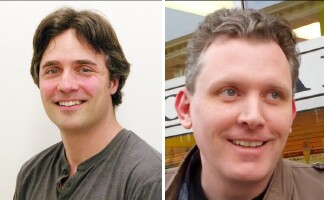 |
C O N F E R E N C E 2014 Thurs May 8 to Sat May 10, 2014 |
 |
Session 20

|
Jason Harlow Andrew Meyertholen |
Fun with Waves and Sound |
Waves are all around us. Water waves, electromagnetic waves and sound waves all have very different properties, but they have some very basic things in common, too. Over the years at the University of Toronto we have developed a wealth of fun demonstrations about waves, both real and virtual, the best of which we will share during the first half of this workshop. During the second half of the workshop, participants will perform experiments in groups of three on standing waves on a string. This experiment involves relatively inexpensive apparatus that gives students a very tactile and visual sense of what standing waves are, and how stringed instruments such as guitars and violins produce sound. |
Biographies |
Jason Harlow completed his undergraduate degree in Physics at the University of Toronto
in 1993, and a Ph.D. in Astrophysics from Penn State University in 2000. He spent several
years teaching undergraduate physics and astronomy courses at the University of the Pacific
in Stockton, California, before returning to U of T. Jason is now a Senior Lecturer in
the Physics Department at U of T, which is part of the Teaching Stream Faculty. His main
area of interest these days is in Physics Education Research, and how to best help
students learn. |